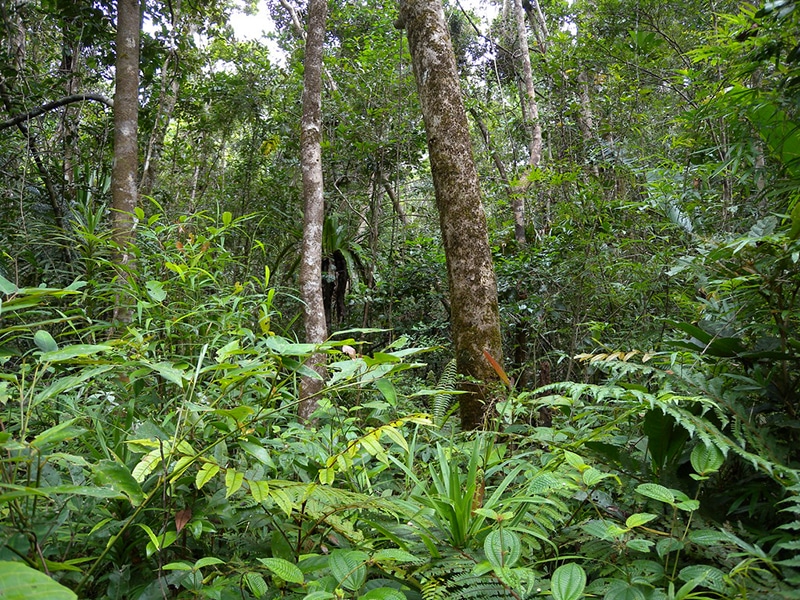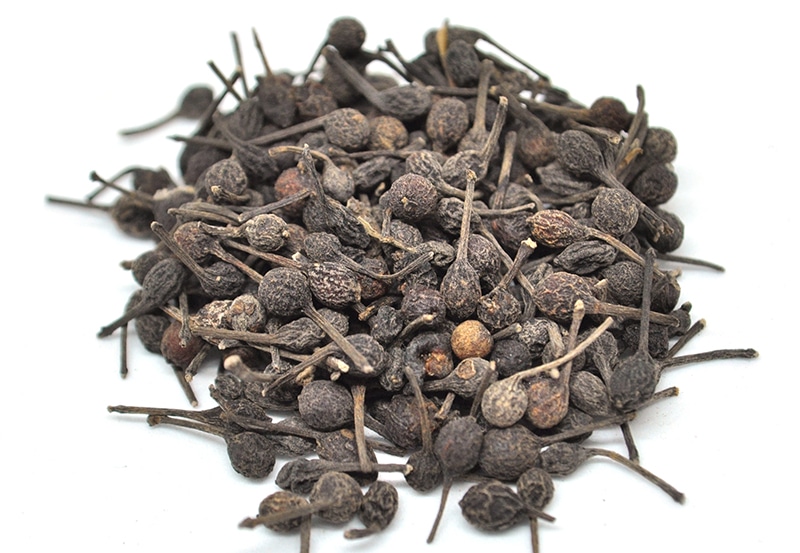What makes voatsiperifery the world’s best pepper
The triple Michelin-starred chef Anne-Sophie Pic has long been raving about its “complex, woody, tangy and spicy nose”. It goes particularly well with pigeon, she says, and also with rhubarb and grapefruit.
Endemic to Madagascar, the wild pepper of voatsiperifery became popular some 15 years ago. Nowadays it is considered to be one of the best peppers in the world, with a uniquely subtle taste, more flavour and scent, and less pungency than other peppers. Once dried, its peppercorns give off woody, earthy and fruity aromas. When fresh, its flavours and scents are even more balanced.
While the pepper does not contribute to food security, it is a source of pleasure for gourmets worldwide and, therefore, of income for people living on the fringes of forests.
We look to voatsiperifery as an ambassador for Madagascar. It is the only spice exported from the country that is endemic to the main island. This wild pepper has small round or oval peppercorns that grow in clusters on long lianas in the natural forests of eastern Madagascar, from the coast to the central highlands. It is dioecious, meaning that male and female flowers grow on separate plants.
In Malagasy, voatsiperifery is a combination of voa (fruit), and tsiperifery, (which makes wounds disappear). This name stems from its medicinal use to heal wounds and refers to the peppercorns themselves, while tsiperifery refers to the plant. Tsiperifery belongs to the pepper family Piperaceae, which includes black pepper (Piper nigrum) and was once likened to Piper borbonense from the French overseas island of Réunion. However, as of the date of writing, it still does not have a valid scientific name.
The first written references to the tsiperifery vine date back to colonial times. Archives from the 19th and early 20th centuries describe a round pepper used locally for medicinal purposes, to treat venereal diseases and colic and to blacken teeth as part of local rituals.

The rainforest in Madagascar
People living around forests traditionally pick and use tsiperifery for its culinary and medicinal properties, but also in their spiritual practice. The leaves are used in rituals, to protect against lightning and prevent rain from falling. The stems and roots serve as infusions to protect one against evil. In the area of medicine, it is used to prevent scarring, and treat respiratory, venereal, skin diseases and sexual problems.
Voatsiperifery was “discovered” between 2004 and 2010 by “spice hunters” Olivier Roellinger and Gérard Vives. Since 2010, demand has rocketed and triggered a rush toward this wild pepper. Its exploitation relies on existing commercial routes: pickers first go deep into the forest and then sell their harvest to middlemen, who go on to sell them on to other economic players who process, bag and export them.
But the wild pepper is tricky to pick. In natural forests, the vines produce fruit very high up in the canopy. Ripping down the fruiting vine or felling the tree it is growing on is the simplest solution. Voatsiperifery has only recently been discovered but is already under threat of extinction and is contributing to the destruction of its habitat.
Like other non-timber forest products (NTFPs) such as mushrooms, honey or certain barks, the profits from tsiperifery should benefit the people living near forests, who are extremely vulnerable. Such a principle lies behind the Nagoya protocol, which commits its signatories to fair, equitable sharing of research results or financial returns on the exploitation of resources. In practice, however, academics often observe trade-offs between locals’ ability to earn a living from this type of business and forest conservation.
There is growing evidence that cultivated vines are private property and are therefore better protected than wild foods. This plausible promise was the working principle for two research programmes led by French and Malagasy agricultural research institutes, CIRAD and FOFIFA, in consultation with four villages of voatsiperifery growers, Ambodivoangy (south-east of Madagascar, Ambongamarina (central highlands), Rantolava (eastern coast), and Masiaposa (north).
In Rantolava and Masiaposa, competition with other, more lucrative crops – vanilla and passion fruit – led to the attempt at domestication being abandoned. In the other two other villages, the research has served to master the first stages of propagation from cuttings and by germination.

Anne Sophie
The first surveys carried out three years after replanting vines in the forest showed a significant increase in tsiperifery vine density, including in zones beyond the plantations. People living around the forest have therefore stopped ripping off vines, are replanting and monitoring the forest plots that house vines. Tsiperifery has changed status. From a freely accessible wild vine, it has become an argument in favour of forest conservation.
However, the road toward the domestication of this wild pepper is still long. The next step is to look into agronomic aspects such as fertilisation, crop protection and genotype selection, agronomists’ hunt for clones that grow faster, produce more fruits and adapt better to a large spectrum of environments. On a value chain level, local people will not grow tsiperifery unless they are sure of being able to sell their products at an acceptable price. This will undoubtedly require a shift in relations between the upstream and downstream parts of the value chain.
This article is republished from The Conversation under a Creative Commons licence







Click here to change your cookie preferences